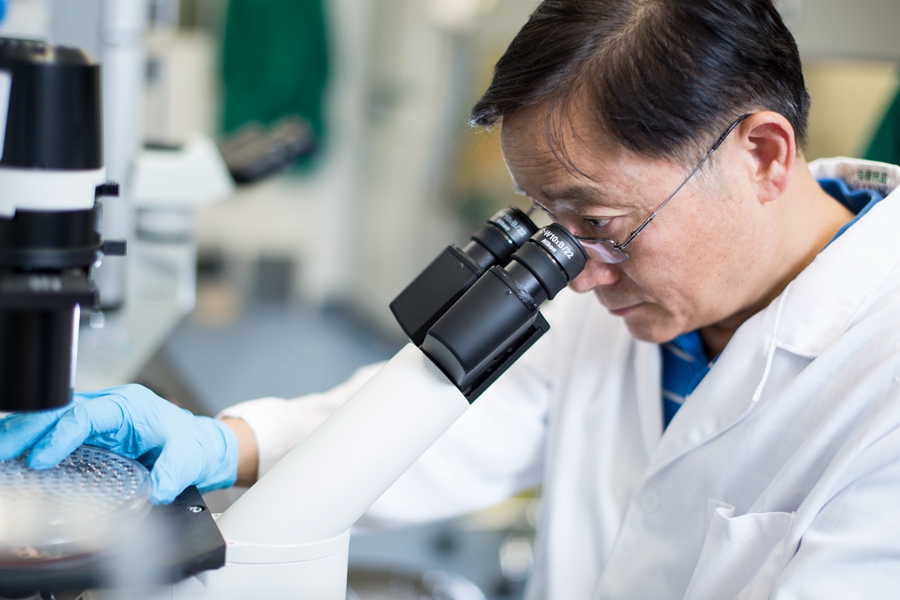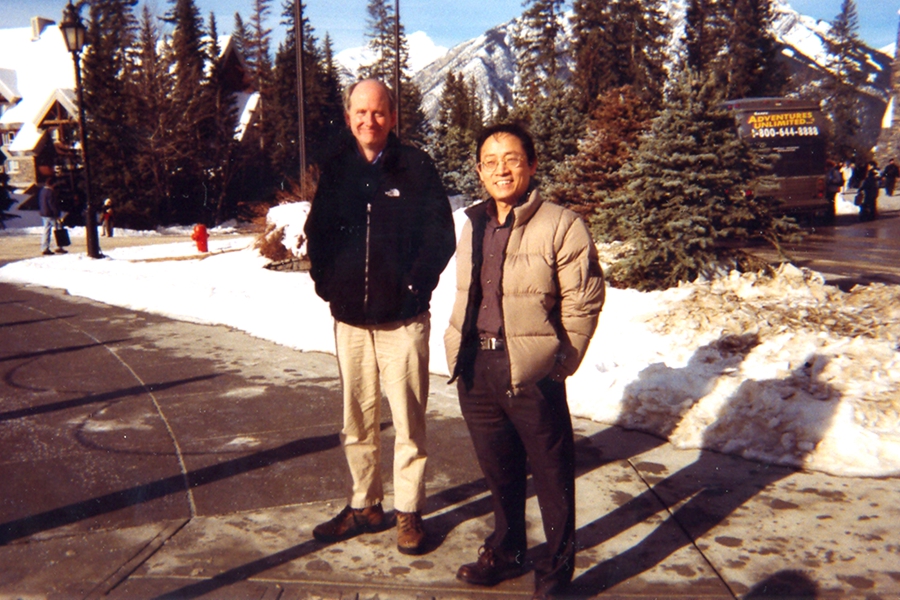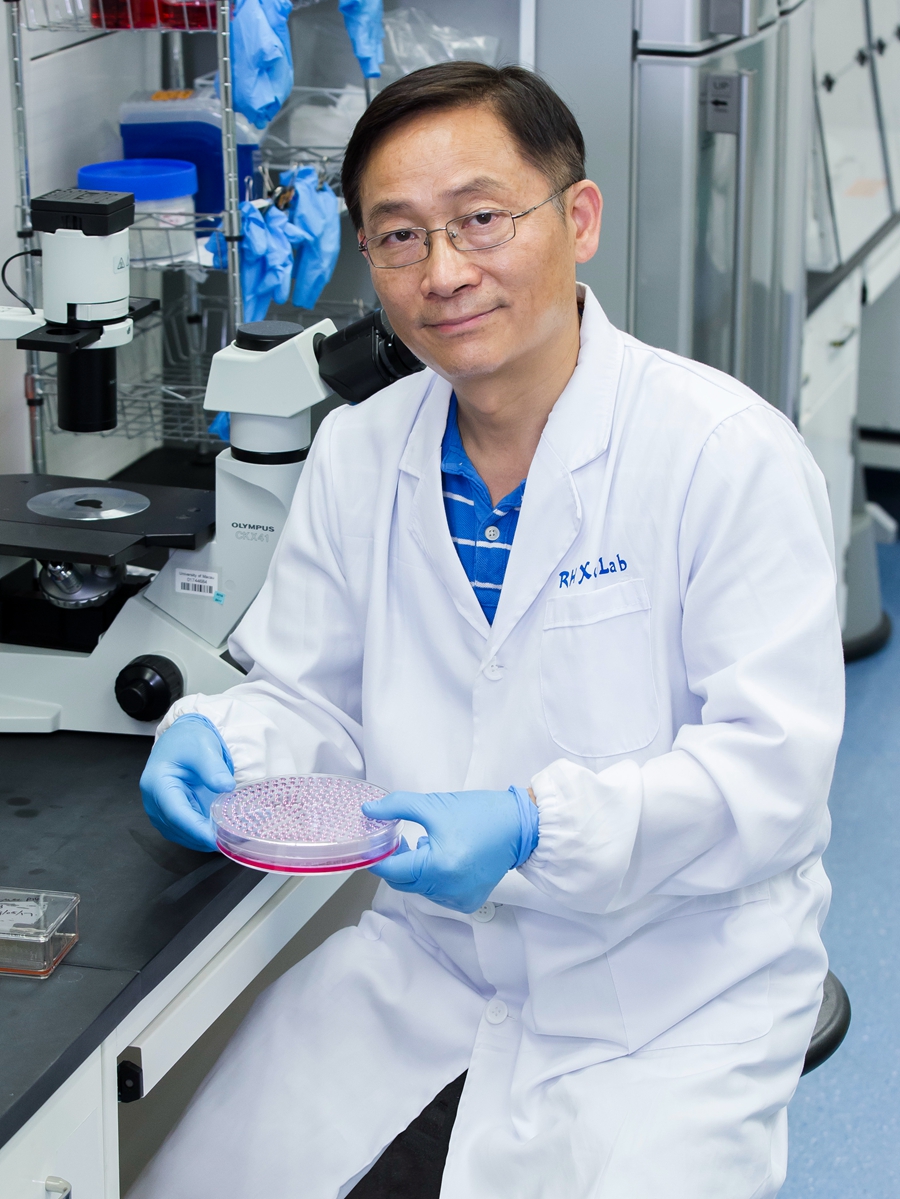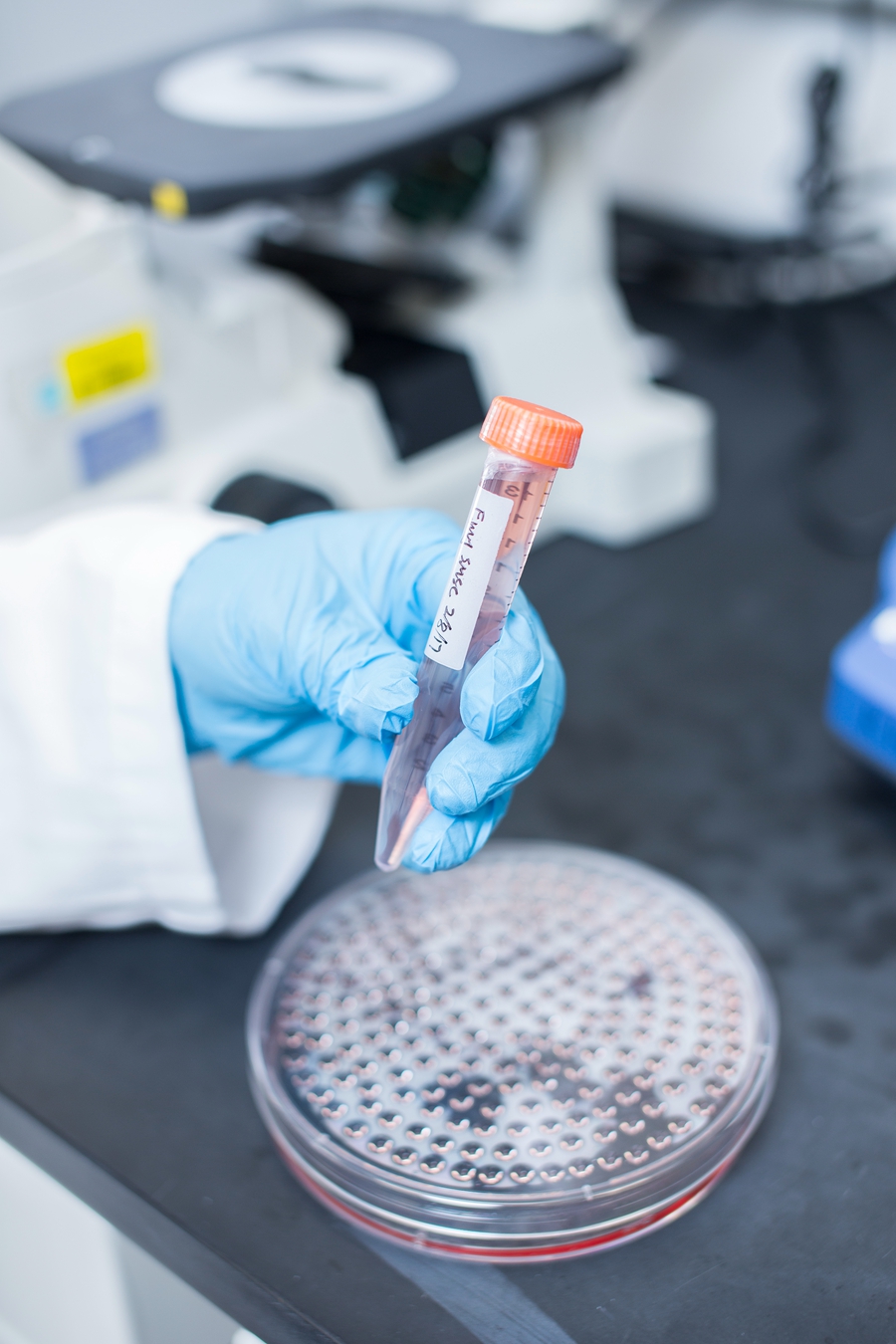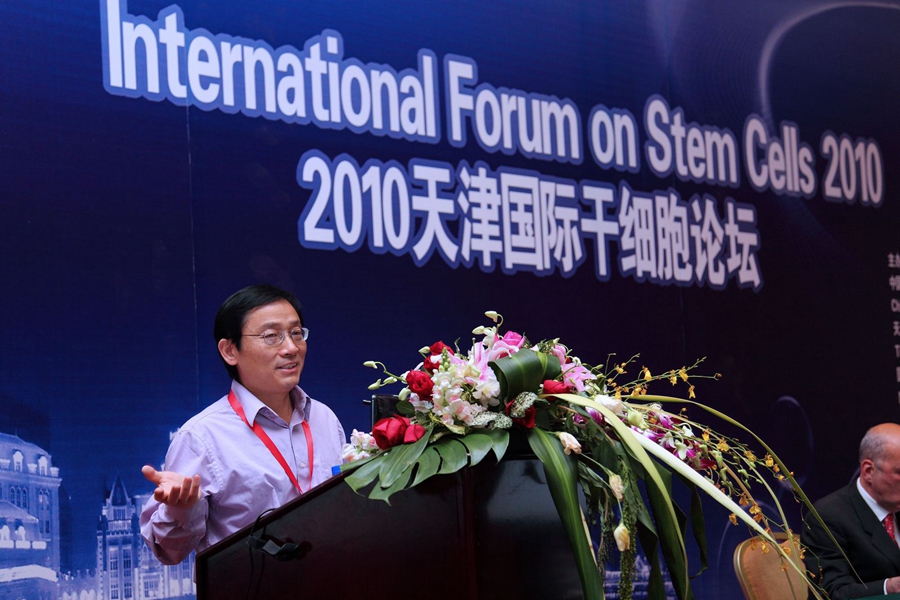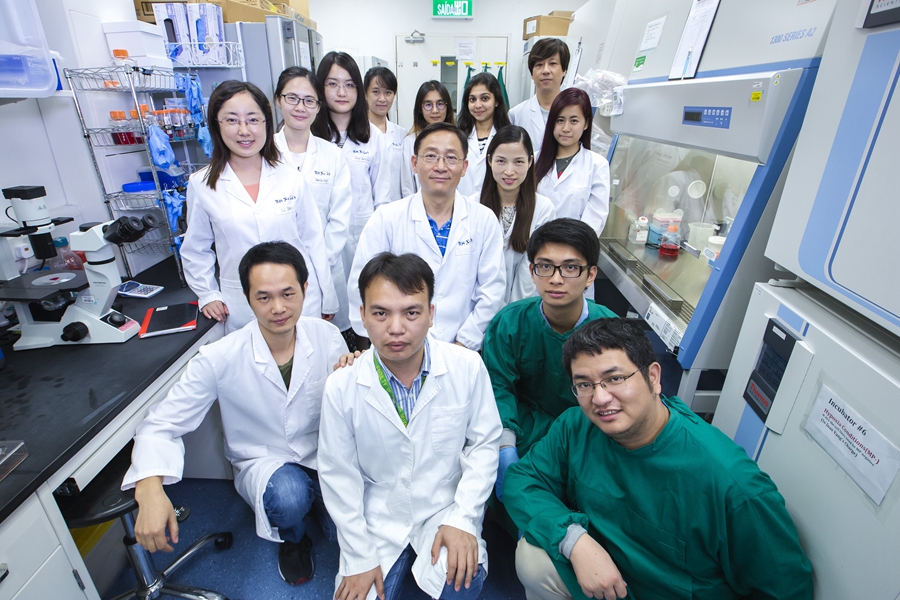New technologies derived from stem cell research have found applications in many areas, such as cosmetic surgery, cancer treatment, and organ transplantation. Prof Ren-He Xu, from the Faculty of Health Sciences, University of Macau (UM), has devoted himself to stem cell research for nearly 20 years, hoping to find a new way to treat disease.
Arousing the Interest of the Father of Human Pluripotent Stem Cells
Xu received his bachelor’s and master’s degrees in medical sciences from South China University and Central South University, respectively. Later, he obtained a doctoral degree from the University of Tokyo, Japan, and received postdoctoral training at both Bar-Ilan University, Israel, and the National Institutes of Health (NIH), United States.
In 1999, he quit his job at the NIH and began to contemplate the future direction of his research. Then he stumbled upon an internet article about stem cell research, which was the hottest subject in medicine at the time. He summoned up his courage and sent his personal resume to Prof James Thomson, known as the father of human embryonic stem cells. Twenty minutes later, he received a phone call from Prof Thomson, who expressed a strong interest in his research and invited him to work at WiCell Research Institute at the University of Wisconsin-Madison. ‘I feel very honoured that an eminent scientist like James Thomson invited me to work with him,’ recalls Prof Xu. He immediately accepted the invitation and became the first senior scientist at the institute, thus beginning his research on stem cells.
Helping Patients with Expertise
The journey of stem cell research is an arduous, bittersweet one, but Prof Xu enjoys the process. ‘In the past, I was mainly focused on the biology and molecular mechanism of stem cells. But with my medical training, I kept thinking how I could use my expertise to help patients and ordinary people,’ he says. ‘If I just study the biology and molecular mechanism of stem cells, it would be very difficult for me to achieve that goal, so I decided to study how stem cells can be used to treat diseases.’
In Prof Xu’s opinion, those with medical training do not necessarily have to become doctors to help people. Becoming a researcher is another option.
In 2014, he began to develop mesenchymal stem cells (MSC). Some have likened MSC to the Monkey King [a mythological figure that features in a body of Chinese legends who can transform into different animals and objects], because MSC can generate different types of cells. Some say MSC are like a medicinal balm, because they provide a low-risk treatment for many diseases. Prof Xu was the first to derive MSC from human embryonic stem cells (hESC) via trophoblast-like cells. MSC show significant results in treating multiple sclerosis and inflammatory bowel disease.
Over the years, Prof Xu has achieved numerous breakthroughs in stem cell research, which has earned him recognition from the scientific community. For example, he discovered an extraneous agent that enables self-regeneration and long-term in-vitro culture of hESC without having to rely on mouse embryonic fibroblast-conditioned medium. With this extraneous agent, experiments on hESC can be conducted under precise conditions to achieve more accurate results, as using animal embryonic fibroblast-conditioned medium can affect clinical applications of stem cells.
Prof Xu has published nearly 60 papers on stem cell research, some of which are in leading scientific journals, including Biomaterials , Nature Methods , Nature Biotechnology , Cell Stem Cell , PNAS , and Stem Cell Reports . He also holds several patents.
An Accidental Breakthrough
Stem cells require precise culture conditions and careful nurturing. They need to be frozen before long-distance transport, which can cost hundreds, sometimes even thousands of, US dollars. Moreover, airlines have regulations concerning the manner in which stem cells can be carried onto a plane. A small amount of cells can be stored in culture tubes. However, exposure to ambient conditions for more than 48 hours will cause the cells to quickly lose their functions and viability.
In 2015, one of Prof Xu’s students conducted an experiment. He prepared stem cells to form spheroids and then studied their properties under 3D condition. After the experiment was over, he left the test tube that contained the cells in the laboratory. One week later, he went back to check the test tube, expecting to see only dead cells. But what he found astonished him. The cells in the tube were still alive, without showing any signs of dying.
After learning the outcome of the experiment, Prof Xu immediately decided to investigate. He found that the viability of spheroids formed of stem cells remained above 90 percent even after 11 days. Using an analogy to illustrate this phenomenon, he says: ‘Stem cells forming spheroids is like animals entering hibernation in winter. Normally, cells are incubated at 37 degrees Celsius, but when placed on the table, the temperature drops to room temperature, around 25 degrees. At this temperature, spheroidal formation protects the cells via reduction of metabolic rates and conservation of energy.’
This discovery eliminates the need to freeze cells before long-distance transport. With this new UM-developed technology, called spheropreservation, stem cells which aggregate can be transported at room temperature to almost anywhere in the world for scientific research or clinical treatment at a cost of merely several US dollars.
Comparable to US in Research Facilities
Having worked in the US for 20 years, Prof Xu has received numerous awards for his achievements in stem cell research. These include the Royan International Research Award from Royan Institute, the CURE Award for Excellence in Stem Cell Research from the Connecticut United for Research Excellence (CURE), the Honoree of 2007 Annual State Bluebook of Connecticut, issued by the state secretary, and the Scientific Achievement Award from the Frederick Research Center of the US
In 2012, Prof Xu, who was then an associate professor at the University of Connecticut and the director of the university’s Stem Cell Institute, met Prof Chuxia Deng from the NIH at a conference they both attended. Prof Deng had just been appointed dean of the new Faculty of Health Sciences (FHS) at UM, and eager to recruit new blood for the fledgling faculty, Prof Deng immediately invited Prof Xu to join UM.
‘Scientific research relies heavily on government support, both financially and policy-wise,’ says Prof Xu. ‘In terms of research facilities and funding, UM is comparable to universities in the US and many other places. Moreover, the “One Country, Two Systems” policy gives Macao an added advantage. These are all important reasons that drew me to UM.’
Currently, Prof Xu and his team are deepening their stem cell research. They hope to improve the safety of hESC-derived therapies and minimise immune response through genome editing, in order to develop hESC-derived MSC into drugs and provide suitable stem cell treatment for patients National Cancer Institute.

